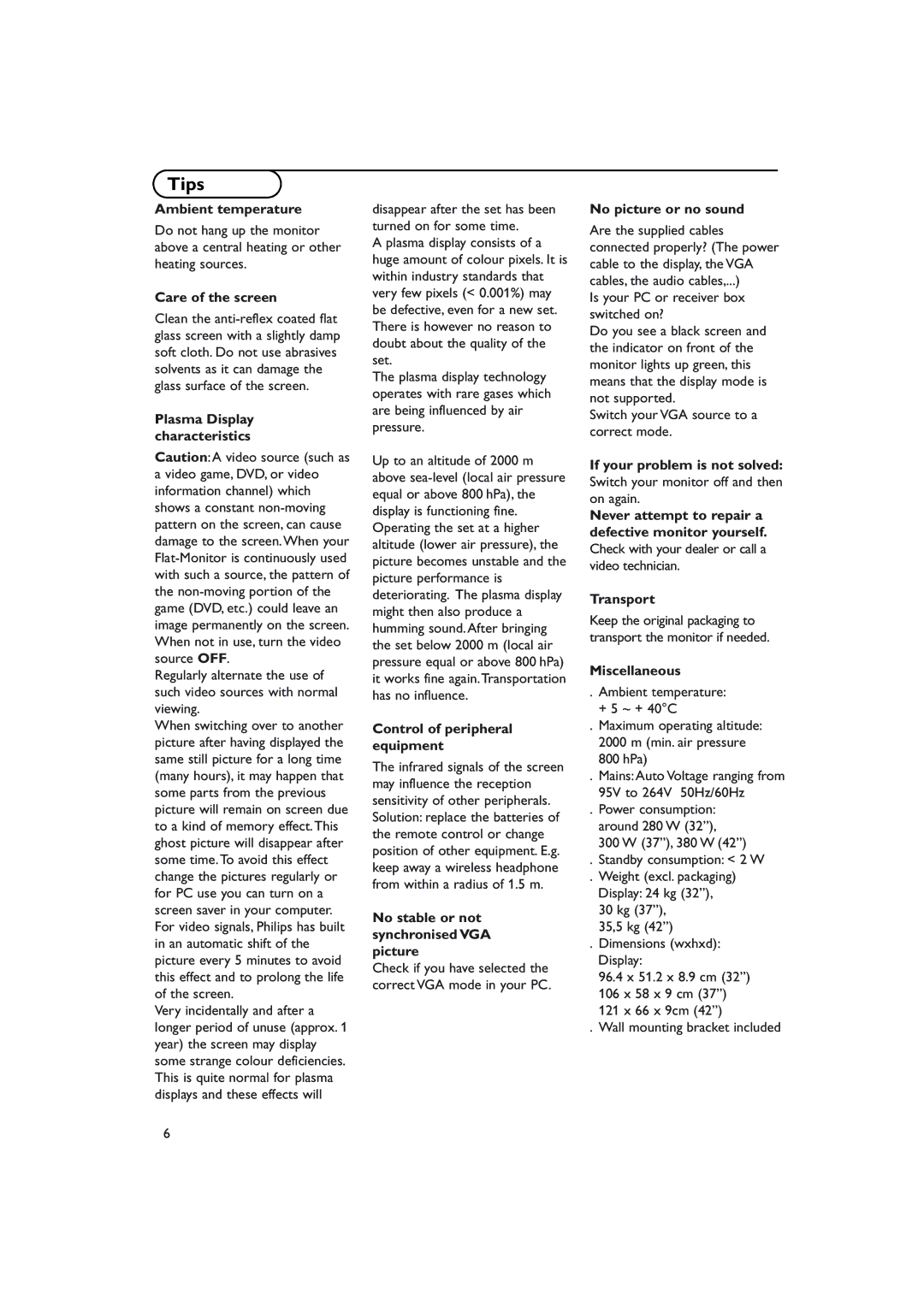
Tips
Ambient temperature
Do not hang up the monitor above a central heating or other heating sources.
Care of the screen
Clean the
Plasma Display characteristics
Caution: A video source (such as a video game, DVD, or video information channel) which shows a constant
Regularly alternate the use of such video sources with normal viewing.
When switching over to another picture after having displayed the same still picture for a long time (many hours), it may happen that some parts from the previous picture will remain on screen due to a kind of memory effect. This ghost picture will disappear after some time. To avoid this effect change the pictures regularly or for PC use you can turn on a screen saver in your computer. For video signals, Philips has built in an automatic shift of the picture every 5 minutes to avoid this effect and to prolong the life of the screen.
Very incidentally and after a longer period of unuse (approx. 1 year) the screen may display some strange colour deficiencies. This is quite normal for plasma displays and these effects will
disappear after the set has been turned on for some time.
A plasma display consists of a huge amount of colour pixels. It is within industry standards that very few pixels (< 0.001%) may be defective, even for a new set. There is however no reason to doubt about the quality of the set.
The plasma display technology operates with rare gases which are being influenced by air pressure.
Up to an altitude of 2000 m above
Control of peripheral equipment
The infrared signals of the screen may influence the reception sensitivity of other peripherals. Solution: replace the batteries of the remote control or change position of other equipment. E.g. keep away a wireless headphone from within a radius of 1.5 m.
No stable or not synchronised VGA picture
Check if you have selected the correct VGA mode in your PC.
No picture or no sound
Are the supplied cables connected properly? (The power cable to the display, the VGA cables, the audio cables,...)
Is your PC or receiver box switched on?
Do you see a black screen and the indicator on front of the monitor lights up green, this means that the display mode is not supported.
Switch your VGA source to a correct mode.
If your problem is not solved: Switch your monitor off and then on again.
Never attempt to repair a
defective monitor yourself. Check with your dealer or call a video technician.
Transport
Keep the original packaging to transport the monitor if needed.
Miscellaneous
. Ambient temperature: + 5 ~ + 40°C
. Maximum operating altitude: 2000 m (min. air pressure 800 hPa)
. Mains: Auto Voltage ranging from 95V to 264V 50Hz/60Hz
. Power consumption: around 280 W (32”),
300 W (37”), 380 W (42”)
. Standby consumption: < 2 W
. Weight (excl. packaging) Display: 24 kg (32”), 30 kg (37”),
35,5 kg (42”)
. Dimensions (wxhxd): Display:
96.4x 51.2 x 8.9 cm (32”) 106 x 58 x 9 cm (37”)
121 x 66 x 9cm (42”)
. Wall mounting bracket included
6
